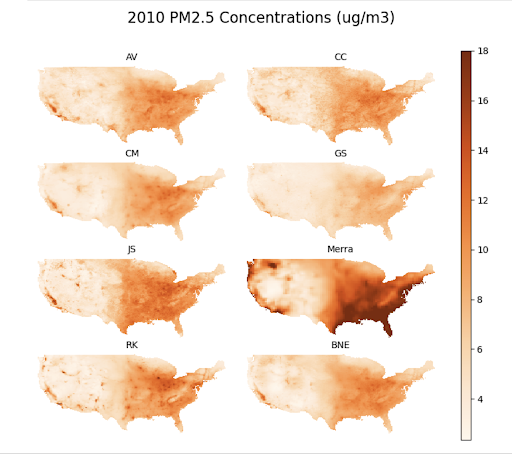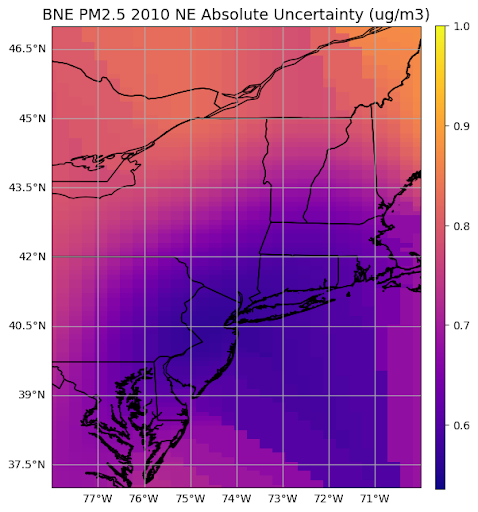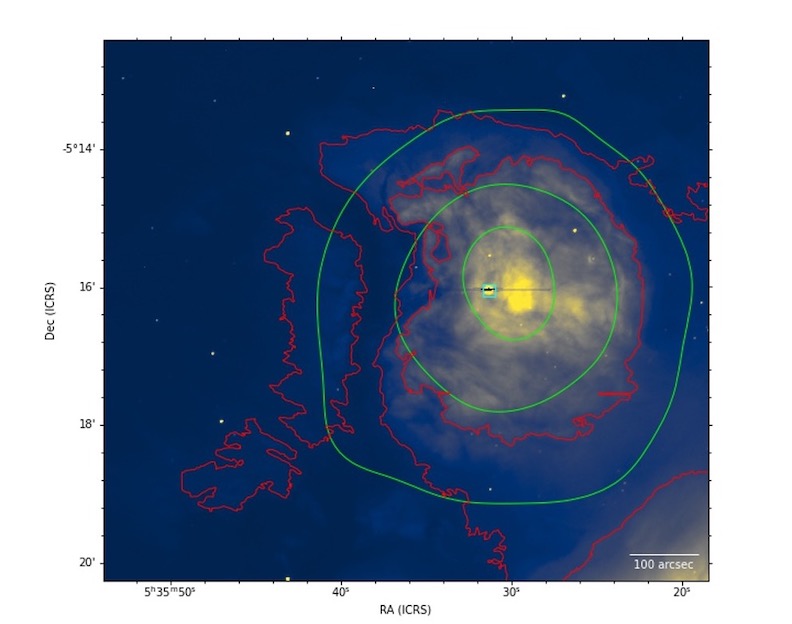Research Experience
Ensembling Exposure Models to Characterize and Minimize Uncertainty with BNE


My current research focuses on applying a Bayesian Nonparametric Ensembling (BNE) method to combine several pollutant exposure datasets into a more accurate prediction set, while also prodiving the uncertainty of said prediction. Pollutant exposure datasets are frequently used in health studies to tie health outcomes, like death or disease incidence, to concentrations of pollutants. One possible error source in this process is that different models can provide very different estimates. It is difficult to know which model to use, and just using one and taking it as truth can propogate errors unknowingly. The benefit of BNE, then, is that it provides not just a dataset built off of several other datasets, but also the uncertainty, so future health studies can more precisely assess the health risks they study.
The modeling method itself was developed by John Paisley and Marianthi Kioumourtzoglou at Columbia University. In collaboration with researchers in Marianthi's group, my focus thusfar has been on preparing and documenting input models for PM2.5, NO2, and O3 for several years to be run in BNE and adapting the various preprocessing scripts to match the input models. As the preprocessing portion nears stability, I am now conducting BNE runs, looking for places where the algorithm may need optimization, comparing the input models and BNE prediction, and soon applying the results to public health objectives. One such path we are considering is discerning whether areas deemed to be environmentally disadvantaged coincide with areas that have higher uncertainty in their pollutant exposure predictions.
The Impact of the M43 HII Region on the Orion A Molecular Cloud

My senior project consisted of an in-depth study of the M43 HII Region in the nearby high-mass star forming region Orion A Molecular Cloud. The analysis invovled determining the mass, kinetic energy, and momentum of the surrounding gas, and observing the behavior of the region's tracing gasses. The code written to do all the analysis is saved as a python package, h2reg, on my Github page. The final report and presentation are attached below. An image of M43 traced in H-alpha is shown above.
Final Report Final PresentationCharacterizing Gas Flow Using Multiply Lensed Quasars

This project involved looking at galaxies illuminated by the multiply lensed quasar, WFI-2033. Essentially, between Earth and the quasar, there is a galaxy massive enough that its gravity "bends" the light coming from WFI-2033, making it appear as though there are multiple light sources when there is only one. These light sources are illuminating other galaxies in our line of sight, and our objective is to look at the gas around these galaxies and see how it flows relative to their nearest galaxies. This involved bulding a spectral extraction tool and chi-squared fitting tool, and analyzing the spectra of several different gas molecules. This code is also available as a python package on my Github. The final report and presentation are also attached. Below is an example image of how we fit chi-squared models to the spectra extracted from the galaxies.
Final Report Final Presentation